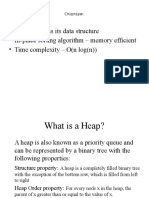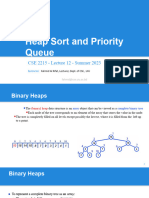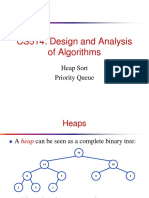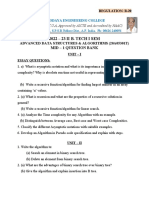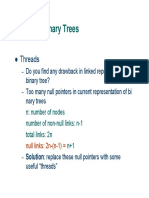0% found this document useful (0 votes)
33 views24 pagesLecture 3 Heap Algorithms
The document provides an overview of binary heaps, including their structure, types (max-heap and min-heap), and operations such as insertion, extraction, and heapify. It explains how heaps are represented in arrays and details the algorithms for maintaining heap properties during these operations. Additionally, it discusses the complexity of these operations, emphasizing that insertion and extraction have a time complexity of O(log n).
Uploaded by
n0236685bCopyright
© © All Rights Reserved
We take content rights seriously. If you suspect this is your content, claim it here.
Available Formats
Download as PPTX, PDF, TXT or read online on Scribd
0% found this document useful (0 votes)
33 views24 pagesLecture 3 Heap Algorithms
The document provides an overview of binary heaps, including their structure, types (max-heap and min-heap), and operations such as insertion, extraction, and heapify. It explains how heaps are represented in arrays and details the algorithms for maintaining heap properties during these operations. Additionally, it discusses the complexity of these operations, emphasizing that insertion and extraction have a time complexity of O(log n).
Uploaded by
n0236685bCopyright
© © All Rights Reserved
We take content rights seriously. If you suspect this is your content, claim it here.
Available Formats
Download as PPTX, PDF, TXT or read online on Scribd
/ 24





























